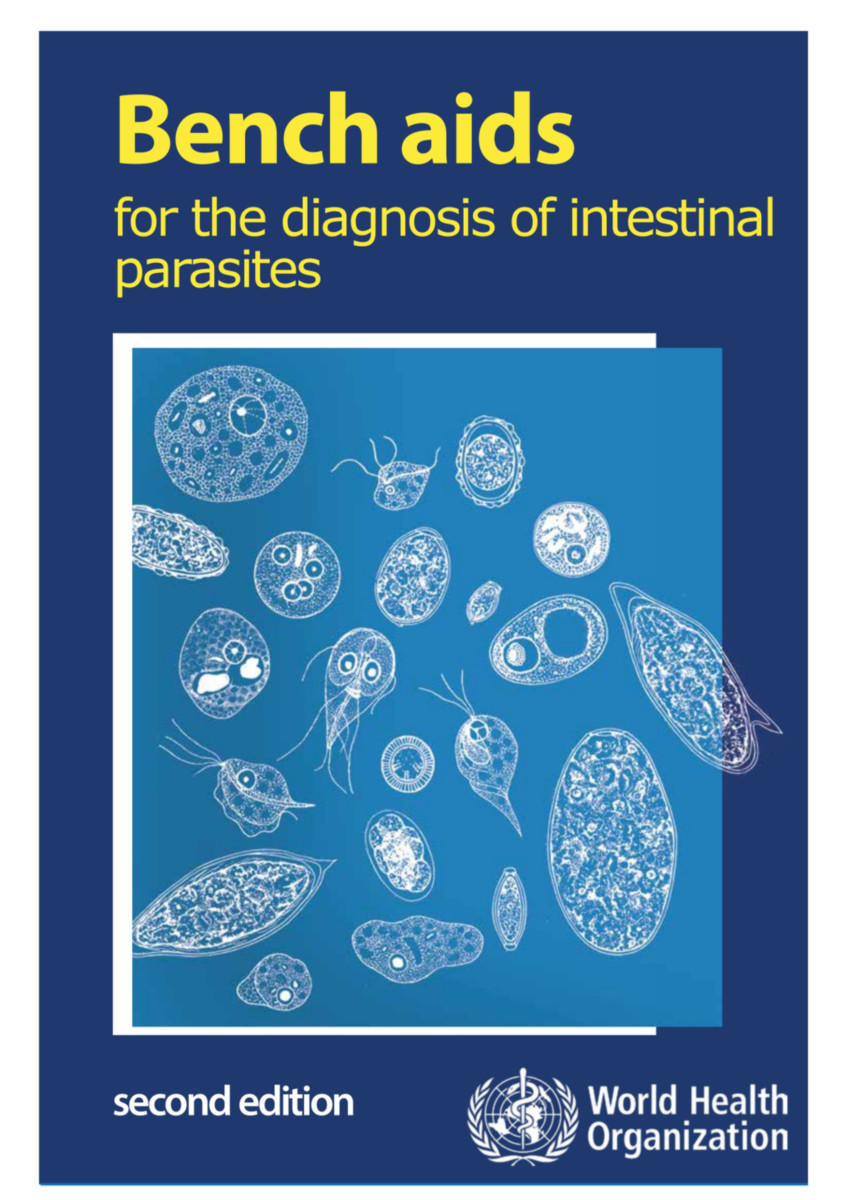Bench Aids for the Diagnosis of Intestinal Parasites Edition 2
- Publisher
World Health Organization - Published
2nd September 2019 - ISBN 9789241515344
- Language English
- Pages 30 pp.
- Size 8" x 12"
This second edition of Bench Aids for the Diagnosis of Intestinal Parasites is intended both as a practical tool for the diagnosis of intestinal parasitic infections for laboratory and field workers and as a teaching aid for students and trainees. The plates are arranged on two sides: the recto with microphotographs for the identification of eggs, larvae, trophozoites, cysts and oocysts occurring in faeces, and the verso dedicated to the different copromicroscopical methods (procedures) and main staining techniques used in parasitology.
Special attention has been devoted to all graphical and pictorial contents. The decision to include the outline of an Ascaris lumbricoides egg in its relative size next to each parasitic structure fulfils the intention of visualizing the actual dimensions that the eye needs to be looking for when examining the specimens with a microscope. For each image, the size of the parasite and a short description are provided to assist in the microscopical identification.
Two summary plates, one for helminths and the other for protozoa, are also included to provide a visual overview of the different presentations of parasitic elements.
The bench aids have been produced in a weatherproof plastic-sealed format that is robust and easy to use at the bench. They are recommended for use by all health workers engaged in the routine diagnosis of intestinal parasitic infections.
World Health Organization
World Health Organization is a Specialized Agency of the United Nations, charged to act as the world's directing and coordinating authority on questions of human health. It is responsible for providing leadership on global health matters, shaping the health research agenda, setting norms and standards, articulating evidence-based policy options, providing technical support to countries, and monitoring and assessing health trends.


